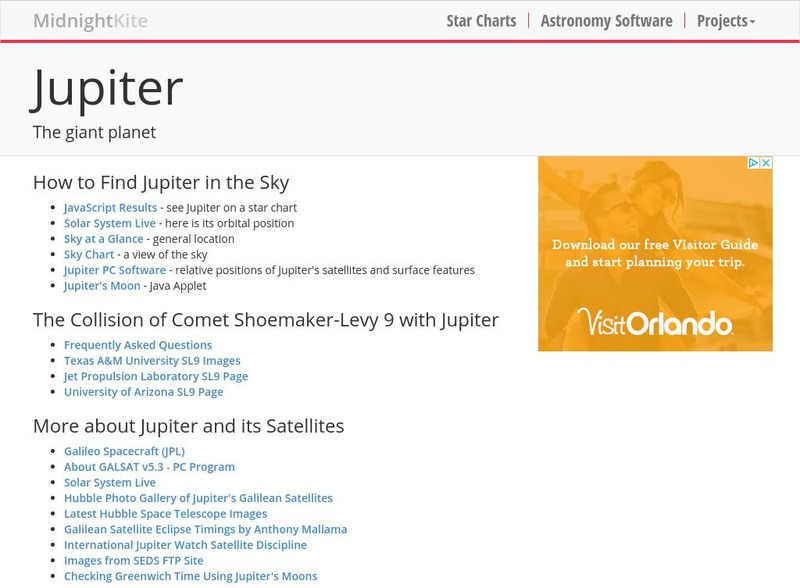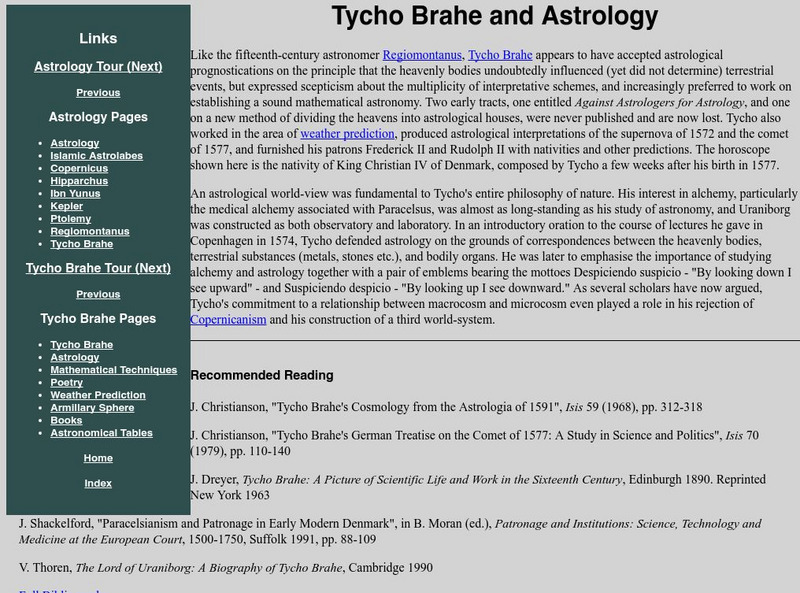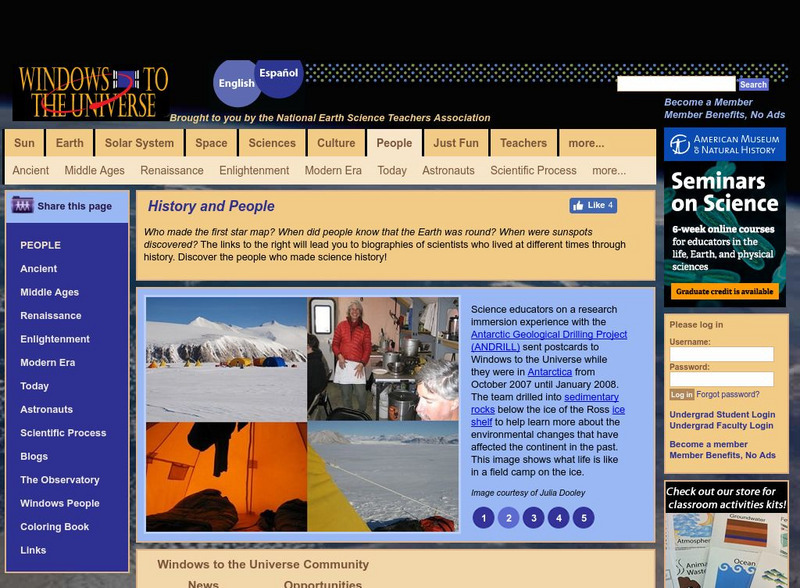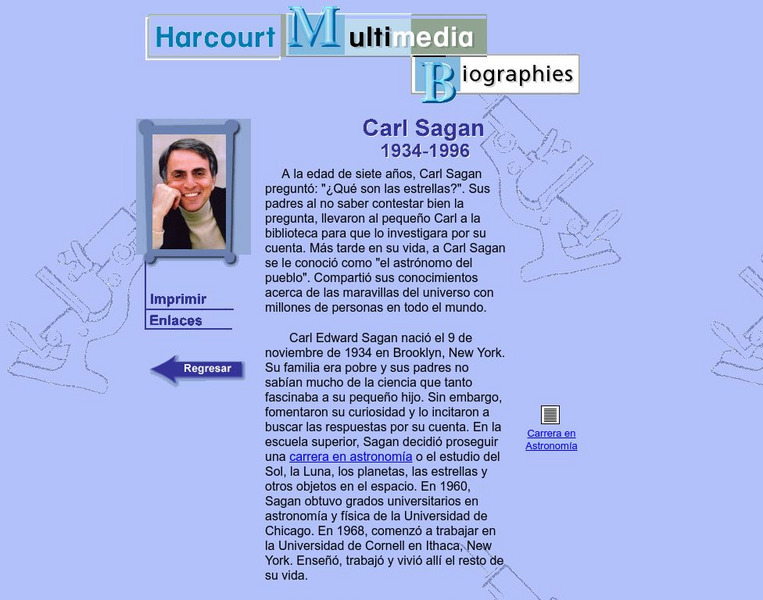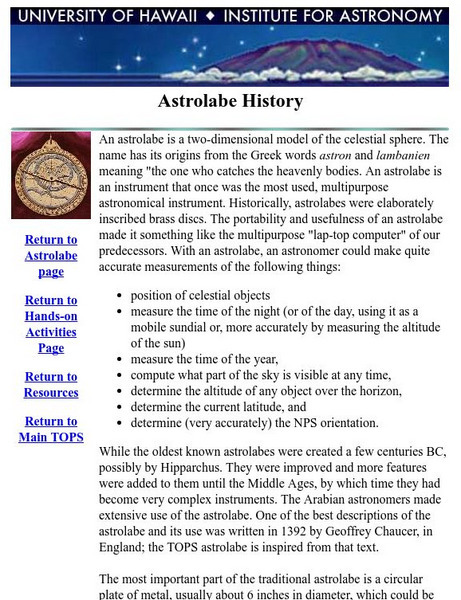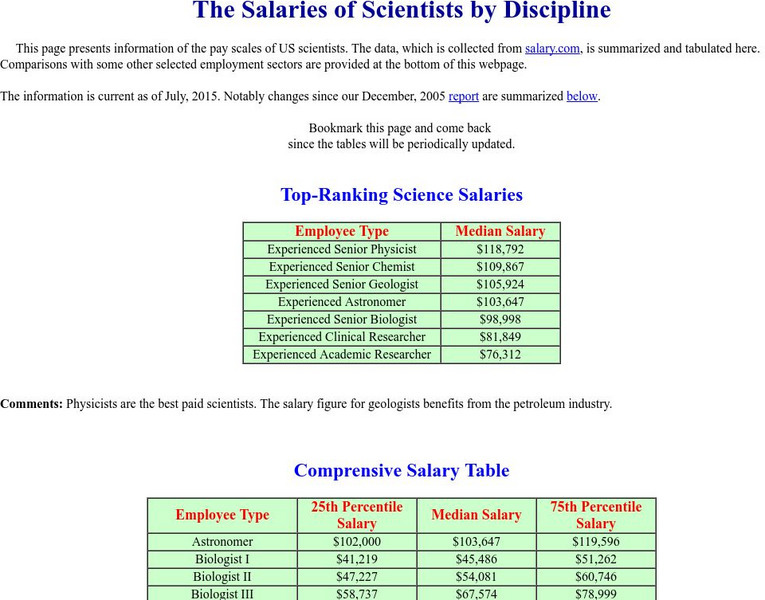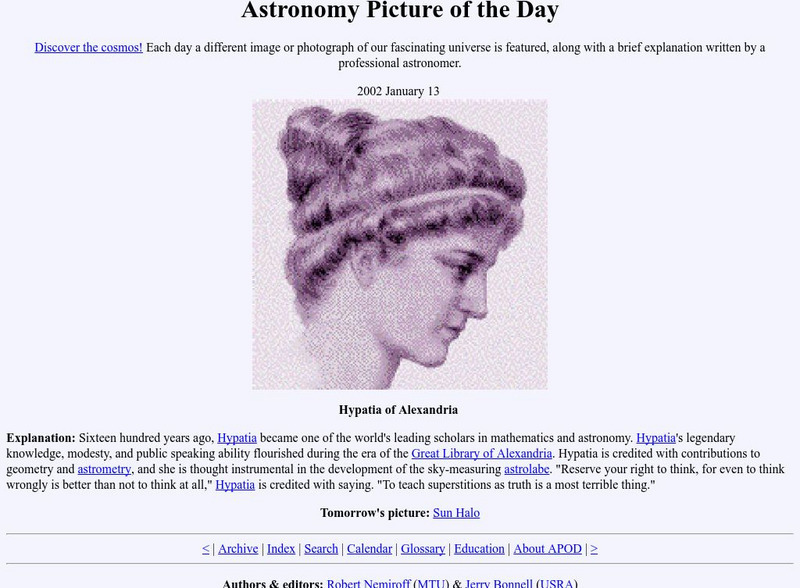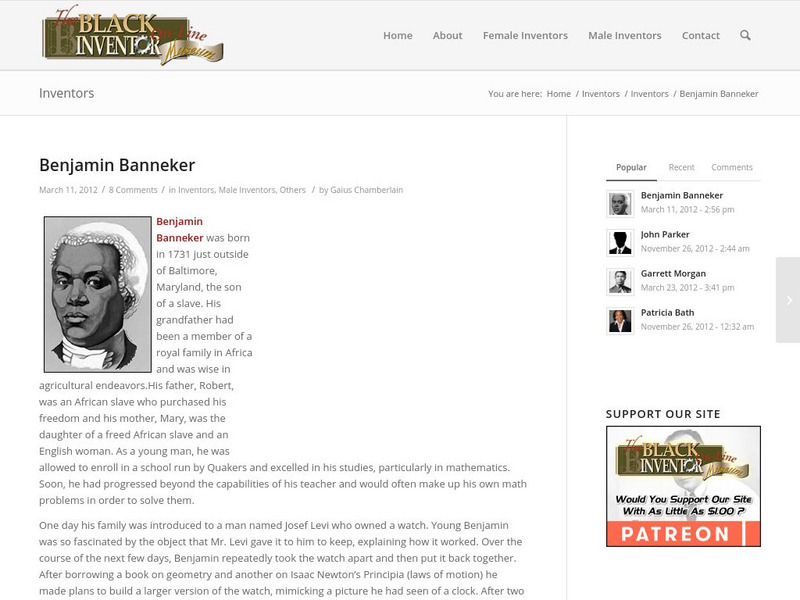Hi, what do you want to do?
Other
Stephen F. Austin State University: Jupiter Events
An excellent site for amateur astronomers, with or without a telescope. Includes some links to information about Jupiter and its satellites and the collision of Comet Shoemaker-Levy 9
Other
U of Cambridge: Tycho Brahe and the Separation of Astronomy From Astrology
The subject of the paper is the shift from an astrology-oriented astronomy towards an allegedly more objective, mathematically grounded approach to astronomy. This shift is illustrated through a close reading of Tycho Brahe's scientific...
Other
University of Cambridge: Tycho Brahe's Books
This site contains information about the books that astronomer, Tycho Brahe wrote and produced in his own printing press. Read on about Brahe and his books. Includes links to biographical information and more of Brahe's endeavors.
TED Talks
Ted: Ted Ed: The First Asteroid Ever Discovered
Over the course of history, we've discovered hundreds of thousands of asteroids. But how do astronomers discover these bits of rock and metal? How many have they found? And how do they tell asteroids apart? Carrie Nugent shares the story...
American Museum of Natural History
American Museum of Natural History: Universe O Logy Card
OLogy cards are like virtual baseball cards about all kinds of science topics. This one is about the Universe and the astronomers that studied the Universe. See if you can answer a few questions when you're done reading.
Alabama Learning Exchange
Alex: Cosmic Measurements
In this lesson, students will use hands on inquiry in cooperative learning groups to understand, develop and analyze common measurements used by astronomers. Students will use common objects such as straws, twizzlers, or toothpicks to...
Khan Academy
Khan Academy: Angular Measure 2
Looking for an easier way to do angular measurements? This page introduces you to a trick by using skinny triangles with small angles. The skinny triangles lets the astronomer assume right triangles and then they can use trigonometry to...
Khan Academy
Khan Academy: Angular Measure 1
Do you know the size of the sun? Using angular measurement can help astronomers measure objects in the sky.
Concord Consortium
Concord Consortium: Stella
Students act as astronomers, studying stars in a patch of sky in our own galaxy. Using simulated data from spectroscopy and other real-world instrumentation, students learn to determine star positions, radial velocity, proper motion, and...
Khan Academy
Khan Academy: Tycho Brahe
A biography of Tycho Brahe can be found on this website. Learn about this naked-eye astronomer work and life on this page.
NASA
Nasa Space Place: What Is an Exoplanet?
Defines exoplanets and explains how astronomers go about looking for them.
National Earth Science Teachers Association
Windows to the Universe: History & People
Biographies of people throughout history who looked at the sky and wondered what was there. Links to a detailed description of the planets and interactive activities.
NASA
Nasa: History of Flight
How did we learn to fly? Resource takes users back through time to discover where the history of flight all started. Offers links to games, art and stories as well as activities.
Houghton Mifflin Harcourt
Harcourt: Biographies: Carl Sagan
A look at Carl Sagan, the man who brought the wonders of astronomy to the average person. Carl Sagan helped millions of people understand earth, the solar system, the universe and beyond. (In Spanish)
Florida State University
Florida State University: Science, Optics & You: Nicolaus Copernicus
Biography of Nicolaus Copernicus (1473-1543), the scientist who first put forward the theory that the Sun was the center of the universe.
Blackdog Media
Classic Reader: Authors: Omar Khayyam
This site features the author Omar Khayyam including a biography and the full text of the two editions of the poem Rubaiyat of Omar Khayyam.
Rice University
Galileo Project: Christopher Clavius
This site from the Galileo Project of the Rice University provides a biography of Christopher Clavius in list format. The information is medium in length and worth checking out for information on the subject.
Wolfram Research
Wolfram Science World: Copernicus, Nicolaus (1473 1543)
A biography of Nicolaus Copernicus and his contribution to science, specifically astronomy.
University of Hawai'i
History of an Astrolabe
This site offers a definition and history of the astrolabe. There are links for additional information and acitivities.
Kidport
Kidport: Space Science
This complete resource will help students to improve their understand of space exploration. Includes images of the universe, galaxies, stars and planets.
Other
Jupiter Scientific: Salaries of Scientists by Discipline
Are you interested in exploring a career in science? Investigate the pay scales of scientists by discipline.
Views of the Solar System
Views of the Solar System: The Solar System
Explore the solar system through this site that includes vivid multimedia resources. Learn the latest scientific discoveries, the history of space exploration, and much more. Site includes videos, graphics, articles, and photographs.
NASA
Nasa: Astronomy Picture of the Day: Hypatia
Learn more about Hypatia when you check out this resource. This site features a picture and a brief synopsis of this famous scientist.
Other
Black Inventors Online Museum: Benjamin Banneker
Use this site to learn about Benjamin Banneker (1731-1806 CE), an African American that created the first clock built in the United States and was known as our first great Black Inventor.
Other popular searches
- Famous Astronomers
- Early Astronomers
- Major Astronomers
- Ancient Astronomers
- Greek Astronomers
- Report on Astronomers
- Astronomers Measure Distance
- Women Astronomers
- Female Astronomers
- Fumes Astronomers
- Five Early Astronomers
- Famous Astronomers Quizes





